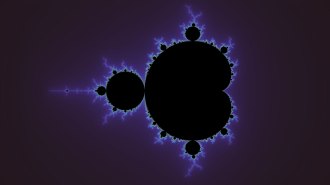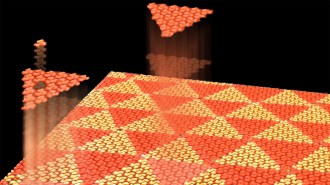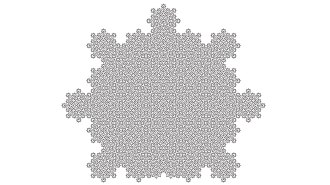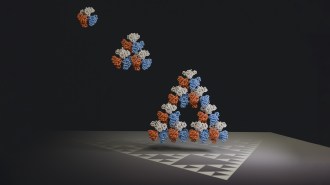- More than 2 years ago
A mathematical duo has made a surprising advance in understanding the distribution of prime numbers, those whole numbers divisible only by themselves and 1. The new result is the most exciting work on prime numbers in more than 3 decades, says mathematician Hugh L. Montgomery of the University of Michigan in Ann Arbor.

However, he cautions that experts are still checking the details of the proof.
Among small numbers, primes are common. Of the first 10 numbers, for instance, 4 of them–2, 3, 5, and 7–are prime. But among larger numbers, primes thin out. Around a trillion, for instance, only about 1 in every 28 numbers is prime.
In the late 19th century, mathematicians proved that the distribution of primes follows an amazingly simple pattern: The average spacing between primes near a number x is the natural logarithm of x, a number closely related to the number of digits in x.
This formula is true only on average, however. Sometimes, the gap between primes is much smaller, other times much larger. The twin-primes conjecture, one of the most famous unsolved problems in number theory, speculates that there are infinitely many pairs of primes that differ by only two. Examples of twin-primes abound–17 and 19, for instance–but for more than a century, mathematicians have struggled without success to prove the conjecture.
However, mathematicians have had some success in considering the more general case of primes that are closer together than predicted by the average-spacing formula. In 1965, Enrico Bombieri of the Institute for Advanced Study in Princeton, N.J., and the late Harold Davenport proved there are infinitely many pairs of primes that are closer together than one-half the average spacing. In the late 1980s, that was whittled down from one-half to one-quarter.
Now, Daniel A. Goldston of San Jose (Calif.) State University and Cem Y. Yildirim of Bogazii University in Istanbul have proven something much stronger: Given any fraction, no matter how small, there are infinitely many prime pairs closer together than that fraction of the average.
“This result blows out of the water a whole line of previous records, as if someone were to run a 3-minute mile,” says Carl Pomerance of Bell Laboratories in Murray Hill, N.J. “It’s an end-run around the big plan for development in the field.”
Brian Conrey, director of the American Institute of Mathematics in Palo Alto, Calif., agrees. “It’s an incredible breakthrough,” he says.
Goldston and Yildirim’s novel idea was to examine the distribution not just of pairs of primes, but also of triples, quadruples, and larger groupings. Studying this wider question simplified the formulas estimating the spacing of primes, and to the team’s surprise, the new result about smaller-than-average prime gaps fell out.
“The result was so much better than what we expected, I almost thought we had made a mistake,” says Goldston, who has been working on prime gaps for 20 years. “I’m as amazed as anyone else that this could be proved so easily.”
The distribution of primes is closely related to one of the most renowned questions in mathematics, the Riemann hypothesis, which concerns an infinite sum called the zeta function. In 2000, the Clay Mathematics Institute in Cambridge, Mass., offered $1 million to anyone who could settle the Riemann hypothesis.
Goldston is optimistic that the new result will say something about the zeta function. “Whether it will say something significant is pretty speculative,” he notes.
****************
If you have a comment on this article that you would like considered for publication in Science News, send it to editors@sciencenews.org. Please include your name and location.
To subscribe to Science News (print), go to https://www.kable.com/pub/scnw/
subServices.asp.
To sign up for the free weekly e-LETTER from Science News, go to http://www.sciencenews.org/subscribe_form.asp.






